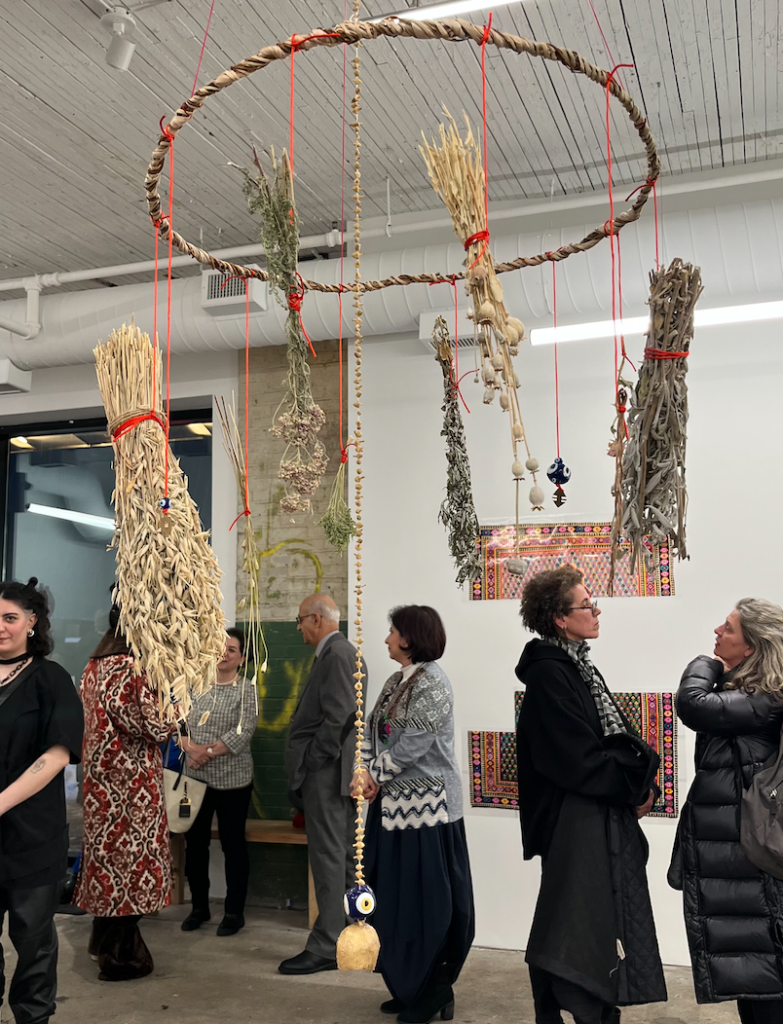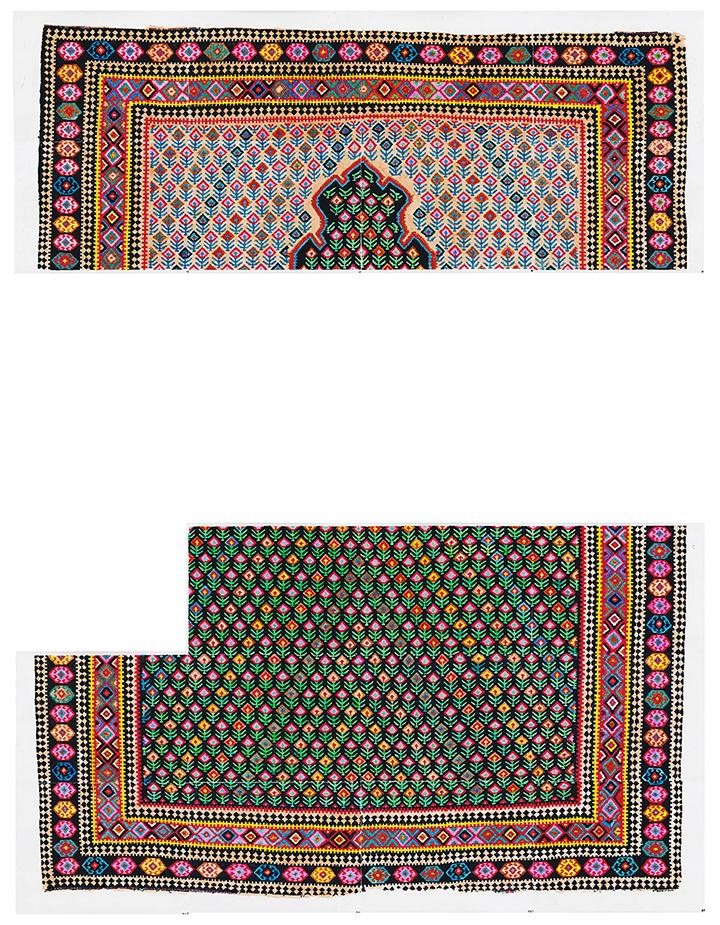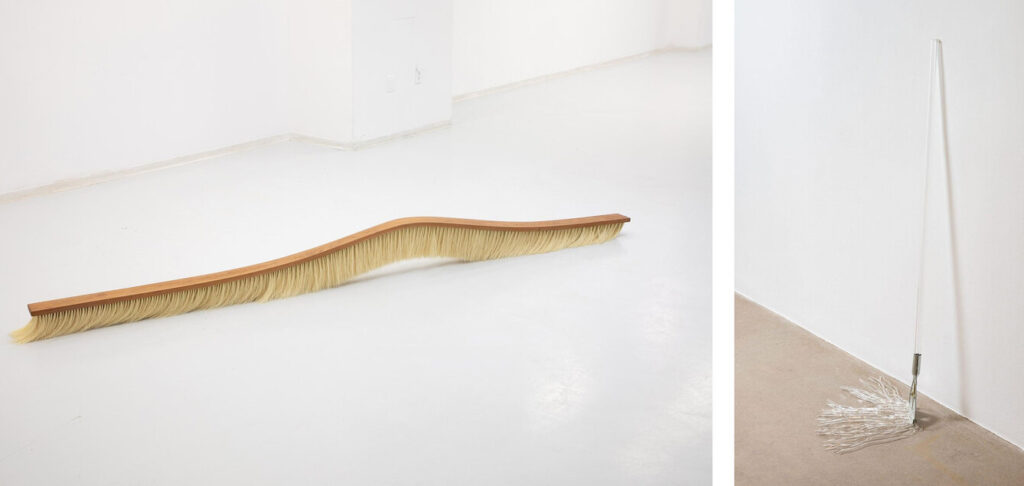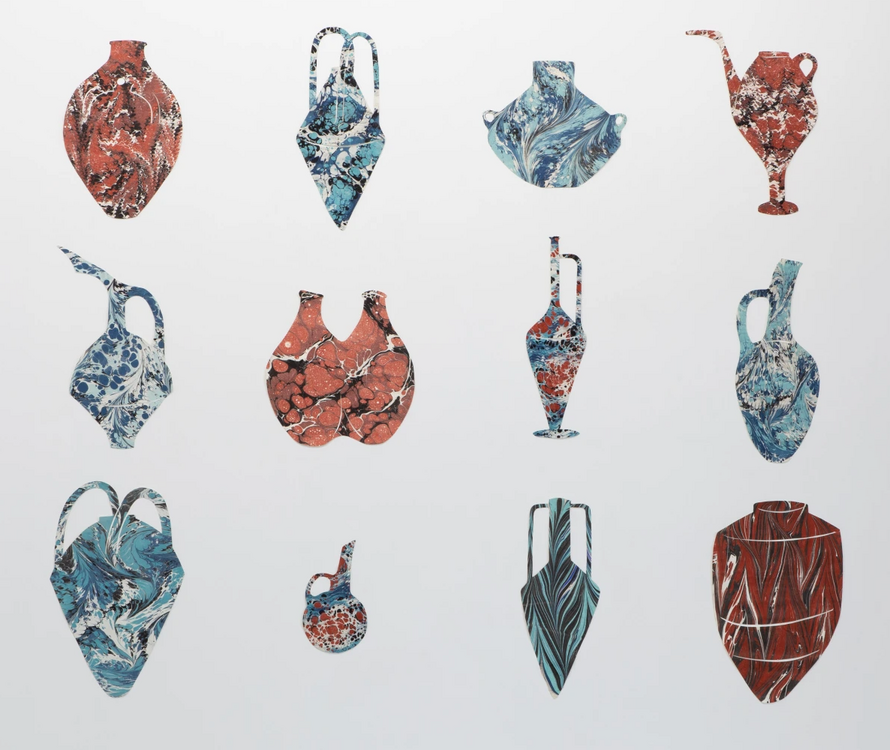On the floor at the centre of The Next Contemporary’s fresh industrial space at 1655 Dupont Street are a series of rugs by Alize Zorlutuna arranged in a circle. Hanging above them is a chandelier created from dried herbs and plants, strung together with flowers and beads. Visitors radiate around this central exhibit, slowly moving between the exposed pillars that break up the space.
Something Like Arriving, Opening Reception, February 25, 2023, Photo: Shakuntala Fernandopulle
Iranian-Canadian curator, Farnoosh Talaee, opened the gallery with the intention of providing a platform for BIPOC artists typically neglected by mainstream institutions.
Something Like Arriving, the gallery’s inaugural exhibit, featuring artists Alize Zorlutuna, Diyar Mayil and Sukaina Kubba, explores the idea of comfort as something broader than a physical state of being. Across the gallery floor and on its walls, the idea of home is constructed and deconstructed. The items we most closely associate with home – rakes, rags, vases, carpets, sticks of sage and lavender – are placed throughout the space in curious combinations and enlarged to odd sizes.
A series of deconstructed carpets by Iraqi-Canadian artist Sukaina Kubba are hung around the room. Another series of her carpet works, this time printed with a 3D-pen using an ephemeral clear filament, almost disappears against the wall. Kubba’s practice revolves around what she categorizes as ’travelling objects,’ like rugs. To Kubba, these objects are vessels of cross-cultural histories and narratives. She is also obsessed with packing materials. Even the carpets featured in the show are placed inside deliberately obvious plastic sheets, drawing attention to how these cultural artefacts are transported across boundaries with migrating families. Once removed from the packaging and placed on the floor, the objects have the ability to reconstruct a place as a home. In Something Like Arriving, they remain behind the plastic, suspended on the walls – conveying an uncomfortable sense of unsettledness.
Sukaina Kubba, T77.0160, recycled U-Haul blankets, thread and embroidery thread from Value Village, and butcher’s twine, 2020
This feeling is matched by Diyar Mayil’s powerful work. Mayil recreates every day domestic objects and disturbs them: the bristles of a broom constructed of plastic makes this tool totally useless. This purposeful dysfunction forms the core of her work. In Sweep, a brush is warped and swollen to resemble a wooden caterpillar. It is placed awkwardly in the gallery’s space – disrupting the movement of the visitors. We are constantly confronted by these objects in our path. As Mayil writes, “my hope is to create an intuitive dialogue between the viewer and my work that might translate into new bodily orientations and sensibilities.” Our bodies, as viewers, are forced to adapt to the spaces she creates – as immigrants do when moving to new countries.
L-R: Diyar Mayil, Sweep, cherry wood, natural fibers, 2022 & Dustpan, glass, gold, 2021
On the wall by the entrance, a series of jugs, vases, and other receptacles are rendered flat by Turkish artist Alize Zorlutuna. The paper works, titled Carrying Seas, are created from hand marbled paper. The specific shapes of these objects are taken from the archaeological record of Anatolian ceramics. Zorlutuna uses them to symbolize the objects we carry with us when we migrate or are displaced from our lands. Similarly, Kubba uses her carpets to echo the movement of people across borders. Like Zorlutuna’s forms, which derive from vessels held in museum collections in the UK, Germany, Turkey, Canada, and the US, Kubba’s specific carpet motifs are inspired by carpets held in collections like the Aga Khan and Textile museums in Toronto. They represent unique cultures and communities.
Alize Zorlutuna, Carrying Seas, hand cut, hand marbled paper, 2023
The intricacy of the materials each artist uses and the narrative of their work speak not only about art but the human condition as well. The paper marbling technique utilized by Zorlutuna, known as ‘Ebru,’ is a form of traditional art-making practiced in Anatolia – a piece of ancestral inheritance. The same can be said of Kubba’s practice – Islamic carpet making is a form of specialized knowledge passed down. Apart from the objects we bring with us when we leave our ancestral lands, we also carry the knowledge hidden in them: wrapped in plastic or flattened in our suitcase.
Shakuntala Fernandopulle
Images are courtesy of The Next Contemporary and the artists
*Exhibition information: Something Like Arriving / Alize Zorlutuna, Diyar Mayil, Sukaina Kubba, February 25 – April 22, 2023, The Next Contemporary, Unit #103, 1655 Dupont St, Toronto. Gallery hours: Wed – Sat 12 – 6 pm.




